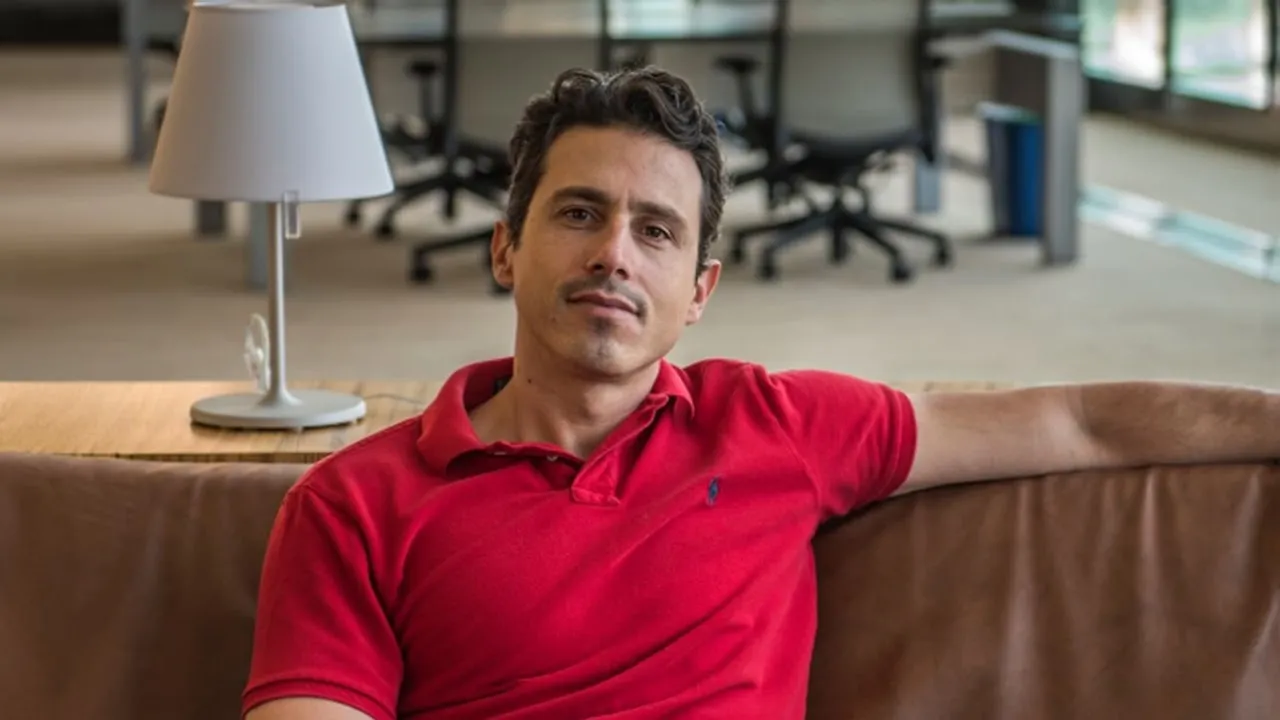
Andrea Fratalocchi
- Professor, Electrical and Computer Engineering
- Principal Investigator, Primalight Laboratory
Professor Fratalocchi is a pioneer in complex systems and sustainable technologies, focused on addressing critical global challenges. His groundbreaking research has led to innovative solutions in areas such as energy harvesting, clean water production and smart materials. As a founder of the ECE program at KAUST and co-founder of Pixeltra, Professor Fratalocchi is a proven leader and entrepreneur, successfully translating his research into real-world impact.
Biography
Andrea Fratalocchi is a full professor in the Computer, Electrical and Mathematical Sciences and Engineering (CEMSE) Division at KAUST. He joined the University in January 2011 as an assistant professor and was promoted to associate professor in 2016. He is one of the founders of the CEMSE Division and the principal investigator of the Primalight Lab.
Before joining KAUST, Fratalocchi was a research fellow at Sapienza University of Rome under a KAUST Fellowship Award. From 2007 to 2009, he was a postdoctoral researcher at Sapienza University under a “New Talent” Award from the Enrico Fermi Research Center. He obtained a Master of Science in Electrical Engineering in 2003 and a Ph.D. in Electrical Engineering in 2007 from the University of Roma Tre, Italy.
Fratalocchi’s career is marked by numerous accolades, including the GCC Enterprise Awards for Best Electrical Engineer of the Year in 2017, the Journal of Optics Outstanding Referee Award in 2017, the Nature Exceptional Referee Award in 2015, and an entry into the Guinness World Records for developing the “Darkest Material Made by Mankind” in 2015.
In 2019, he became a Fellow of the Institute of Physics (IOP), a Senior Member of the IEEE, and a Fellow of the Optical Society of America (OSA).
Fratalocchi has authored over 200 publications, including three books and six patents. He ranks in the top 2% of optics researchers worldwide, based on the standardized citation index compiled by PLOS.
Research Interests
Professor Fratalocchi is dedicated to advancing the field of physics and engineering. His research approach harnesses the potential of complex physical systems, characterized by many degrees of freedom, turning them from theoretical challenges into real-world technological solutions with diverse applications.
His research embraces a nonlinear paradigm, departing from traditional "cause and effect" or linear thinking. This approach finds applications in diverse areas such as chaos theory, rare events, brain functions, natural mimicry and camouflage, swarm's cooperative dynamics and intelligence.
Using disorder as a building block, he proposes novel, low-cost, scalable technologies that outperform current systems by several orders of magnitude.
As part of his engineering research, he has developed world-record-performing nanomaterials for concentrating solar power, steam generation, desalination, solar water splitting, solar and chemical fuel production for carbon-negative technologies, artificial intelligence optical neural networks for hyperspectral imaging and sensing, and machine-learning nanomaterials for wave control and bioimaging, including early disease detection of cancer and diabetes.
Professional Profile
Awards and Distinctions
- GCC Enterprise Awards, Best Electrical Engineer of the Year, 2017
- Journal of Optics Outstanding Referee Award for the "exceptional and outstanding referee activity" for the journal, 2017
- Guinness World Record for developing the “Darkest Material Made by Mankind”, 2015
- Nature Exceptional Referee Award for the "exceptional and outstanding referee activity" for the journal Nature, 2015
- “Nano-Optics gets practical”, Early career focus issue on Nature Nanotechnology for ‘the outstanding research on chaotic energy harvesting’ (Nat. Nanotech. 10,11, 2015), 2015
- European Physics Lett. (EPL) Best Presentation Award - Awarded to PhD Student J. S. T. Gongora for the work `Superfocusing properties of disordered plasmonic nanolenses'., 2014
- Nature Exceptional Referee Award (2012) - Awarded for the `exceptional and outstanding referee activity' for the Nature journal Nature Photonics, 2012
- ‘Science in the sand’, interview on Nature Photonics (Nat. Photon. 6, 277-278, 2012), 2012
- KAUST Fellowship Award - Awarded 100K USD per year for the research project `SolarPaint', involving the study of new complexity-driven mechanisms for energy harvesting, with emphasis on photovoltaic and thermodynamics solar., 2009 - 2011
Research Center Enrico Fermi, “New Talent” Award (2007-2009) - Awarded 30K USD per year, 2007 - 2009
Professional Memberships
- Editor, Scientific Reports, Nature Publishing Group, 2024
- Editor, Scientific Reports, Nature Publishing Group, 2024
Education
- Doctor of Philosophy (Ph.D.)
- Electrical Engineering, Roma Tre University, Italy, 2007
- Master of Science (M.S.)
- Electrical Engineering, Roma Tre University, Italy, 2003
Quote
Chaos, disorder and unpredictability are ubiquitous phenomena that pervade our existence and are the result of the never-ending evolution of Nature. The majority of our systems try to avoid these effects, as we commonly assume that chaos diminishes the performance of existing devices. The focus of my research, conversely, is to show that disorder can be used as a building block for a novel, low-cost and scalable technology that outperforms current systems by orders of magnitude.
Patents
Analytic device including nanostructures
Patent number: 10048211
Questions and Answers
Why KAUST?
To be part of a start-up University with great ambitions since its foundation was an important opportunity for my career. The unique concentration of resources, state-of-the-art facilities, core labs, and supercomputers significantly allows doing very high-level research. Thereof, if you have high-risk, high gain ideas, this is indeed the right place to prove yourself.
Why Photonics?
Photonics is the science of harnessing light. Light is an abundant source of energy that permeates our planet; it is delivered from free and it can be used for an impressive number of different applications, ranging from ultrafast communications to bio-imaging, energy harvesting, advanced materials engineering and fabrication. Since I joined the first class on this topic during my engineering degree I was fascinated by this subject and the impressive technological possibilities that it offers.